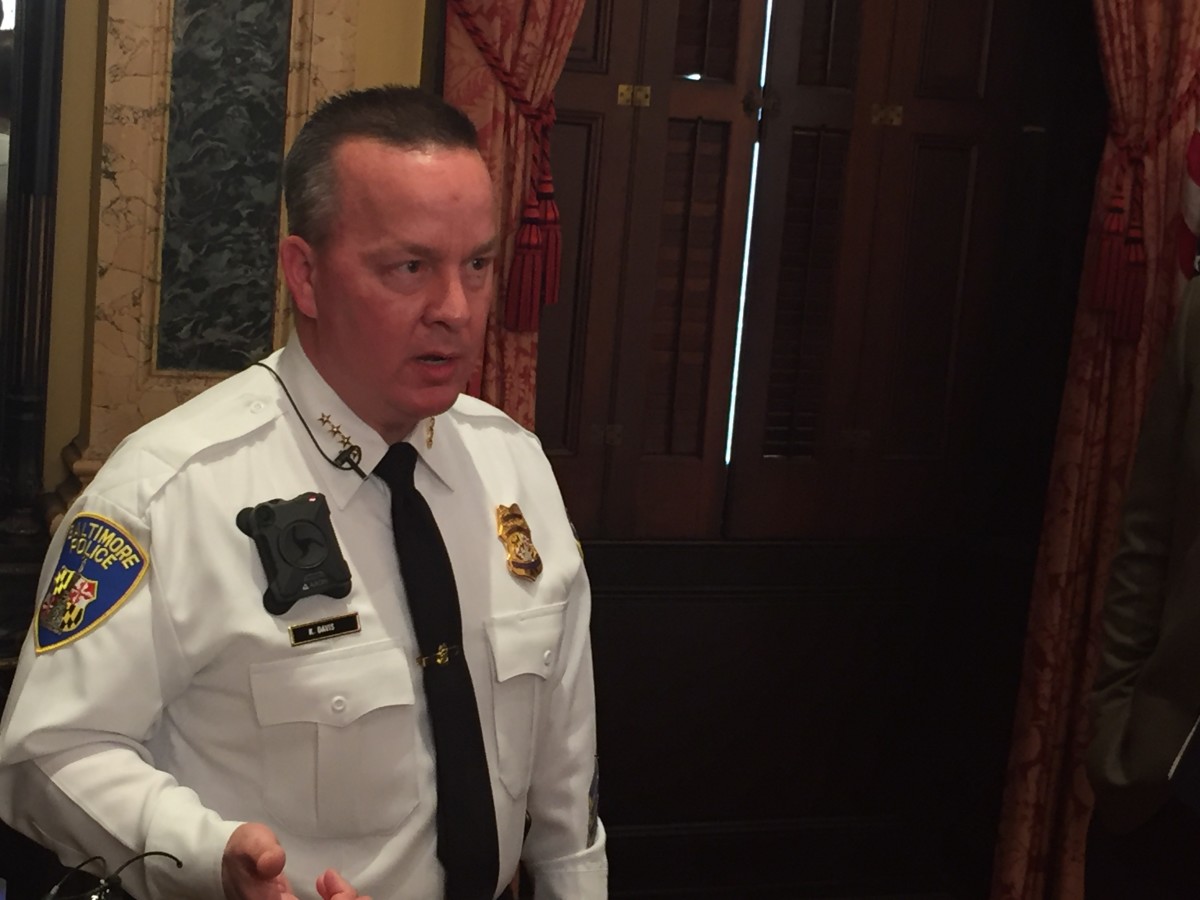For the Baltimore Police Department, new technology is one part of reform. Commissioner Kevin Davis has said the department’s tech in some cases is “stuck in the mid-’80s.”
It’s why Chief Ganesha Martin, who heads BPD’s Department of Justice Compliance and Accountability and External Affairs, was at Code for Baltimore’s first meetup last Thursday looking to connect with the tech community and encouraging folks to put ideas for police tech up on the event’s idea board.
Fantastic night! We can't wait to get started on projects that will benefit Baltimore. #HackLocal https://t.co/lrbmD478w8
— Code for Baltimore (@CodeForBmore) January 13, 2017
Need more proof? It’s in the legal docs. Earlier that day, U.S. Attorney General Loretta Lynch and Baltimore leaders announced a consent decree to address the department’s history of unconstitutional policing. The big, sprawling legal document lays out how the police department has to make change, and it’s supposed to be enforced by a federal monitor and judge.
Read the decree
There’s a few places where it specifically points to tech. Let’s take a look:
Tech Upgrades
- The consent decree makes plain that the police department has to get new technology. Within the year, the BPD has to complete a plan to implement new technology. Specifically, the decree spells out that the department has to provide computers to officers (yes, really). It also has to provide access to databases that have basic identification info about people, call history at locations where they respond and info on warrants or restraining orders.
Data on Stops, Searches and Arrests
- One major BPD problem identified by the U.S. Department of Justice was routine racial profiling. Data helped the DOJ show how the problems were systemic. Now BPD will have to implement a database that contains info on stops, searches, arrests and use of force, among other items. Reports will have to be issued on at least an annual basis, the consent decree states.
Body Cameras
- After legislative back-and-forth, the department is already using body cameras. The consent decree lays out specific policies that must be in place. Specifications range from data download protocol to to where on the body a camera must be worn.
Early Intervention System
- Another upgrade is specifically aimed at tracking potentially troubling officer behavior. The consent decree says the early intervention system has to recognize signs that officers are behaving in a problematic way, as well as intervene to correct behavior. Potentially related: Over the summer, BPD rolled out a new system that makes sure officers read policies.
Transparency
- BPD must disclose when it is acquiring new technologies used for enforcement. This includes weapons and, in what would be a big change, surveillance equipment. The website already has an Open and Transparent section, so that’s a start.
Before you go...
Please consider supporting Technical.ly to keep our independent journalism strong. Unlike most business-focused media outlets, we don’t have a paywall. Instead, we count on your personal and organizational support.
Join our growing Slack community
Join 5,000 tech professionals and entrepreneurs in our community Slack today!

Entrepreneurship is changing, and so is the economic development behind it

Tech Hubs’ new $210M funding leaves Baltimore and Philly off the table

Here’s what to know before using AI to craft your brand’s social media posts


